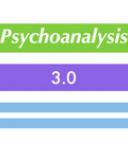
Gender
Boys Will Be Girls: How “Peanuts Envy” Shows Us Who We’re Becoming
Gender-bending commercials index positive social change
Posted January 20, 2011
By Jack Drescher, MD
Psychoanalysts tend to notice when the private experiences we explore in our clinical work—such as feelings about gender and gender differences—resonate with popular culture. And with this year's Super Bowl combatants about to be selected in this weekend's conference championship games, I am reminded of one particularly hilarious commercial from last year's game.
It featured a group of young men playing football with golden girl Betty White. She's playing badly, stumbling around the field and easily tackled. Her image, however, turns out to be a visual metaphor (bumbling, eighty-year old woman) for a young male player sorely in need of the kind of energy boost he can get only from the Snickers offered by her/his girlfriend. One bite and he's transformed. His athletic true male self appears and he shakes himself free in the secondary ready to receive a pass.
One successful gender-bending Snickers commercial spawned another. In Road Trip, we find Aretha Franklin in the back seat of a car with three young men, basically bitching about the heat. After slapping one of her fellow roadies in the front seat, the guy seated next to her says, "Jeff, eat a Snickers. Every time you get hungry you turn into a diva." Aretha takes a bite and turns into a young man, apparently now cured of his hypoglycemic irritability. Just in time, as it turns out, because the guy in the seat in front of him has been transformed by Snickers-less hunger into Liza Minelli who complains, "Will you get your knees out of the back of my seat?"
The presumably male audience for these commercials ate them up. Both have had millions of viewers on YouTube. What could it all mean?
Once upon a time the categories of man and woman were sharply delineated and being a man was defined as an absence of female traits—and vice versa for the definition of woman. In fact, the two genders were (and sometimes still are) defined as opposites. In some quarters suggesting even a hint of effeminacy to a macho male can still get you beaten up.
But the concept of bisexuality shook up earlier notions that divisions between men and women are so sharp. Bisexuality presumed that everyone had some soupçon of the other gender. And many people came to accept this idea when they thought about their own experience and the behavior of others.
By the 1960s, the feminist and gay rights movements further challenged conventional notions of gender. Women started taking on traditional male jobs (although we still say "female doctor") and gay people sought (and in many places have now obtained) the right to same-sex marriage.
And then in 1970, with a growing awareness of transgender people, the Kinks happily sang, "Girls will be boys and boys will be girls." Lola made it to the top ten hit parade in both the USA and the UK.
These commercials offer a glimpse into how much our ideas about gender have changed (Not to mention our evolving ideas about race, since Aretha turns into a white boy). Sharp distinctions between the sexes have been blurred and the best part about these changes is how they can make us sing, dance and laugh.
-------------
About the author:
Jack Drescher, MD, is a Training and Supervising Analyst at the William Alanson White Institute in NYC. He is a Clinical Associate Professor of Psychiatry at New York Medical College and a member of the DSM-5 Workgroup on Sexual and Gender Identity Disorders. The author of Psychoanalytic Therapy and the Gay Man, he has written numerous scholarly articles and book chapters and edited a score of books dealing with gender and sexuality.
© 2011 Jack Drescher, All Rights Reserved

